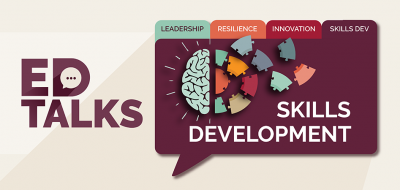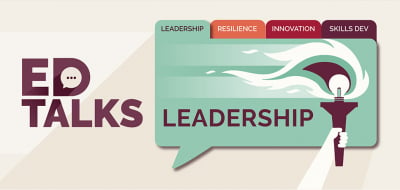CNN recently called Amazon ‘the most valuable company on the planet’. A big part of the goliath’s success comes down to design thinking and Jeff Bezos’ insistence on an empty chair.
Bezos’ legendary empty chair is present in every meeting. It represents the customer. Whatever Amazon says or does must always be to its customers’ benefit. From an aesthetic point of view, Amazon’s website is neither simple nor beautiful – two things we expect of good design. Instead, it focuses on simplicity of experience, guided by customer empathy.
It’s phenomenal to see a company prioritise design, systems, processes and technologies around the customer experience. It’s an outside-in, not an inside-out perspective.
What is design thinking?
Anyone aspiring to build the next Amazon needs to adopt a similar approach. Amazon’s ‘customer obsession’ is beautifully captured within its strategic framework. It embodies mature design thinking. Design thinking comprises three parts: empathy for the end user, creativity when solutioning and rationality when making choices and trade-offs.
The Hassno-Plattner Institute of Design at Stanford breaks down design thinking into five stages: ‘Empathise, define the problem, ideate (creatively generate ideas), prototype and test.’ It’s a process that brings hard and soft skills together. It combines the concrete and the abstract. The big picture and the small details. It brings paradoxical contexts together – like art and science.
Here are some of the principles of design thinking and its value for businesses:
- Empathy is businesses’ most underutilised secret weapon. You can’t solve a problem effectively if you’re not experiencing the pain. Empathy goes beyond the physical design of something to the emotional experience of it. Companies must go through what their customers experience to understand this. For example, if you work at a bank, you shouldn’t jump the queue. Then you never experience something you expect your clients to tolerate. If you are not using your own products and processes the same way your customers do, then there is an opportunity for innovation. Amazon puts the customer at the centre of everything they do – it is their common purpose and the way they measure success.
- In the past, corporates used to ‘roll out products and pray’. Design thinking advocates for ideation and iteration instead. The introduction of rapid prototyping means that organisations learn how to fail fast and move to the next, feasible solution. You do not go too far in designing the final product/service or experience without engaging the stakeholders, especially through end-user testing. This improves the success rate as most of the typical failure points are ironed out in prototyping.
- Innovation is probably the most used word in the history of corporates. We all know it’s important. Design thinking invites the HOW of innovation. It’s about learning ideation techniques to come up with creative alternatives to solving complex problems. It means representing the customers’ experience in a way that’s diverse and collaborative. The best ideation comes from having different people around the table. The trick is learning tools to break down silos and encourage everyone to apply their unique lens to a common issue.
- Sometimes our short-term reaction to the environment can take us away from our bigger purpose and we become ineffective at using our resources to solve the right problem in the right way. Design thinking connects your short-, medium- and long-term activities in a visual way. This ensures that as the environment and customer trends shift, Amazon stays connected to their ideal future, which is to ‘be earth’s most customer-centric company’.
A final message for those with Amazonian dreams? Collaborate and partner with your customers to become user-centric. We usually design our organisations in silos with a functional/product view, so our focus becomes all about our struggle to collaborate internally, without that common guiding light which says all eyes should be on the customers. The people who really deal with customers should be empowered to make decisions to create amazing customer experience, rather than centralising power where there is no customer in sight. Make sure you not only have a chair in every meeting for the customer but have chairs for every stakeholder who can contribute.
USB-ED’s short courses on Innovation & Design Thinking and Customer Centricity will give you a foundation of design thinking techniques and a working understanding of the role customers play in your business. This is a critical first step in your journey to customer obsession, Amazon-style.
written by





